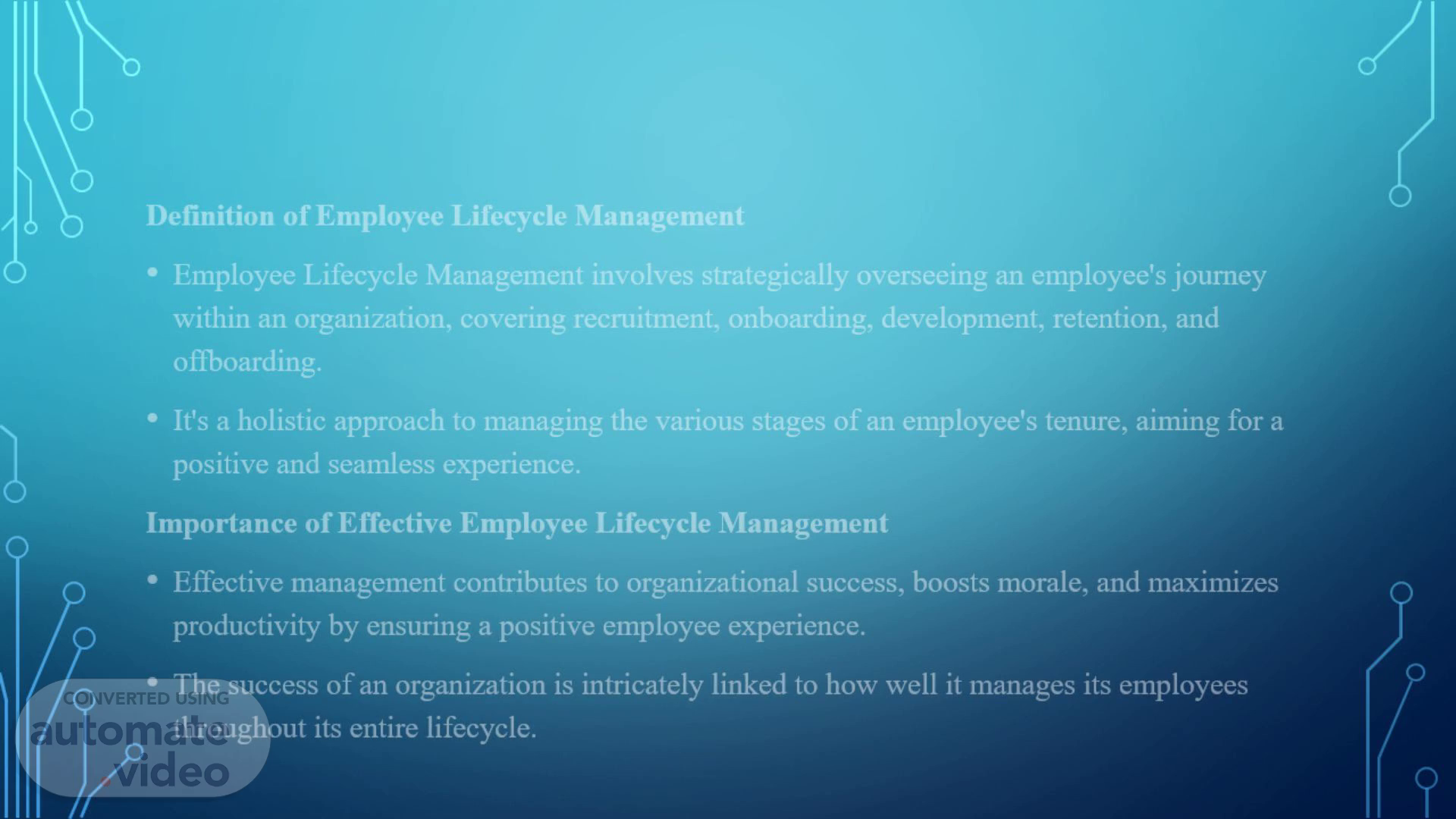
Page 1 (0s)
[Audio] Welcome to our presentation on the crucial role of Human Resource Management (HRM) in optimizing the employee lifecycle. Employee Lifecycle Management involves overseeing an employee's journey within an organization, covering key stages from recruitment to offboarding. Effective management is essential for organizational success, contributing to increased productivity, employee satisfaction, and talent retention..
Page 2 (28s)
[Audio] Let's dive into the strategies employed by HRM in the recruitment and onboarding phases. In recruitment, HRM crafts compelling job descriptions, utilizes diverse talent acquisition channels, and maintains a strong employer brand. Onboarding practices involve comprehensive orientation programs, mentorship, and integration activities for a seamless transition for new hires..
Page 3 (55s)
[Audio] Moving on to development and retention, HRM identifies training needs, provides opportunities for skill development, and manages performance through regular feedback and appraisals. Employee retention is enhanced through recognition programs, competitive benefits, and fostering a positive work culture..
Page 4 (1m 24s)
[Audio] In the offboarding phase, HRM ensures a positive experience through exit interviews, knowledge transfer, and maintaining positive relationships. Succession planning involves identifying and developing internal talent for key roles, creating career paths, and providing training opportunities for future leaders..
Page 5 (1m 52s)
[Audio] To sum up, HRM plays a pivotal role in optimizing the employee lifecycle, contributing to organizational success and a positive work environment. Effective employee lifecycle management correlates with increased productivity and innovation. We encourage organizations to prioritize HRM practices for sustained growth and a thriving workplace. Thank you for joining us today. If you have any questions or insights, we'd love to hear from you..